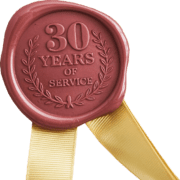Step 3: Training your staff.
10 Steps to successful CRM implementation
Implementing a Customer Relationship Management (CRM) system is a crucial step for any business looking to improve its customer engagement and overall performance. However, it is not only important to choose the right CRM solution, but also to ensure that your employees are trained to use the system effectively. Training employees on how to use the CRM system is crucial for the success of the implementation process.
One of the key aspects of training employees on how to use the CRM system is to ensure that they are proficient in entering, managing, and analyzing customer data. This includes understanding how to input customer information, create customer profiles, and update customer information as needed. It also includes training on how to use the system to track customer preferences, purchase history, and other important data that can be used to improve sales and customer service.
If working with an implementation partner, make sure they can describe how they will run their training plan, and how they check to make sure your users acquire the necessary skills. Look for documented processes and examples of training material.
For example, a retail company may train their sales team on how to use the CRM to track customer preferences and improve sales. This could include training on how to use the system to identify potential upsell and cross-sell opportunities, as well as how to use the data to create targeted marketing campaigns. Additionally, the sales team can be trained on how to use the system to track customer interactions, such as phone calls and emails, to improve communication and follow-up with customers.
Employees need to understand how to analyze customer data. This includes training on how to use the system’s reporting and analytics tools to gain insights into customer behavior, preferences, and trends. This information can be used to make data-driven decisions, such as identifying which products or services are most popular, where to focus marketing efforts, and how to improve customer service.
It is also important to ensure that employees are trained on how to use the system’s workflow and automation features. These features can help to streamline business processes, such as lead management and sales forecasting, as well as improve communication and collaboration within the organization. This can help to increase productivity and improve overall performance.
To ensure that employees are effectively trained on how to use the CRM system, it is important to develop a comprehensive training plan. This plan should include a combination of online tutorials, in-person training sessions, and on-the-job training. It should also include ongoing support and resources, such as user manuals and helpdesk support, to ensure that employees can continue learning and improving their skills as they use the system.
In summary, training employees on how to use the CRM system is crucial for the success of the implementation process. By ensuring that employees are proficient in entering, managing, and analyzing customer data, as well as understanding how to use the system’s workflow and automation features, businesses can improve their customer engagement and overall performance.



